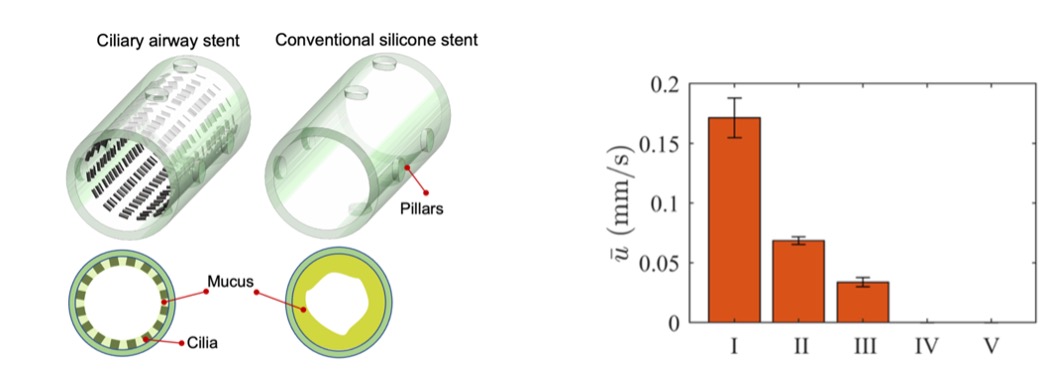Summary
Various widespread diseases associated with airway constriction can be combatted using airway stents. However, such stents are either prone to clogging themselves or tend to invade neighboring tissue. Vanderbilt engineers have developed a technology that avoids both of these pitfalls by combining the use of tissue-friendly silicone with active cilia for mucus clearing.
Addressed Need
Diseases like lung cancer, COPD, and cystic fibrosis affect over 500 million people worldwide and together cost the global economy trillions of dollars per year. A debilitating symptom common to these diseases is difficult breathing, which is caused by airway constriction. Airway stents can provide relief by holding airways open, but existing stents are either prone to clogging (silicone stents) or tend to invade neighboring tissue (metal stents). Airway stents that avoid these issues are essential to meeting the needs of patients worldwide.
Technology Description
Vanderbilt researchers have designed a silicone airway stent that is internally lined with active cilia. Said cilia can be actuated by a nearby, rotating, permanent magnet (outside the body) to move in patterns optimized for pumping viscous fluids like mucus. Additionally, these cilia are coated in hydrogels and shaped appropriately to enhance their ability to pump relevant fluids.
Competitive Advantages
These ciliary silicone airway stents avoid the pitfalls of the silicone and metal stents available today. While the cilia ensure that airways remain unclogged, the silicone composition ensures that the stents do not invade neighboring tissue. They have a traditional form factor that allows them to be placed using conventional stent installation techniques, and they can be visualized using CT scans and X-rays. The necessary magnetic actuation can be applied externally and non-invasively.
Stage of Development
These airway stent devices have been iteratively designed and rigorously tested for their ability to clear porcine mucus from airway phantoms. The figure below shows that they clear mucus orders of magnitude faster than conventional silicone airway stents can, thereby avoiding the mucus buildup that makes breathing difficult.
Figure

Left Diagram of ciliary and conventional silicone airway stents, with a cross-sectional view displaying how mucus builds up in the conventional stents to impede airflow. Right Comparison of viscous fluid clearing speed in various airway stents shows significantly faster clearance in the optimized ciliary stent (I) than in conventional stents (V).




